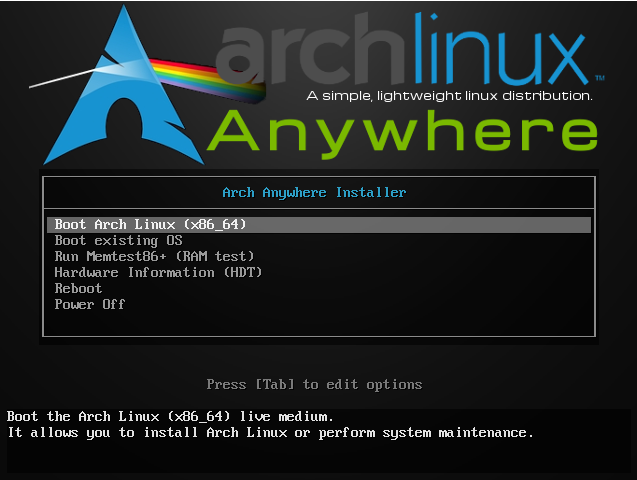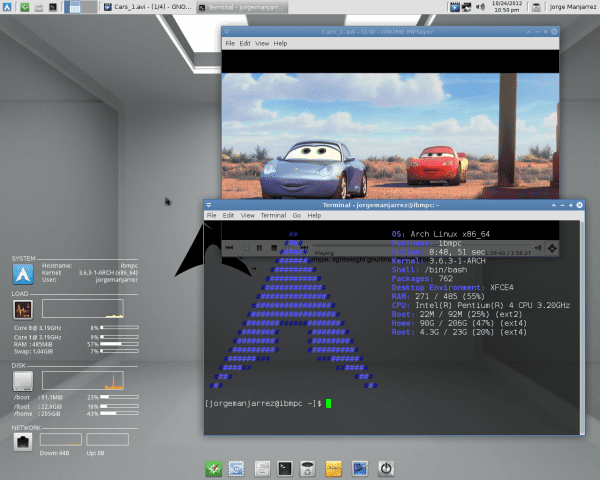

- #Arch linux installation install
- #Arch linux installation password
- #Arch linux installation iso
- #Arch linux installation download
#Arch linux installation password
Then setup a root password and keep a note of this password as it will be very important. Now choose a hostname for your archlinux machine. You can choose to have swap enabled or disabled, we’ll go with the default. Next, leave the bootloader settings as is and move on to the Swap settings. Additionally you can also choose a disk encryption and setup a password for that. Now select the Disk Layout option and then choose the second option which is to wipe the disk and use a best-effort default partition layout.

Be cautious when selecting the drive, as any data on the chosen drive will be wiped and may be difficult to recover. It will show you all the drives that are connected to your computer and you will have to choose your drive carefully. Now you can choose your own locale language for us we’ll choose English USA. Next, we have the keyboard layout and the Mirror region both of which we will aslo leave as is. Now you can use Rufus or Balena Etcher to create the bootable pendrive. Now you will also need an 8GB or higher capacity pendrive, connect it to your computer and make sure it is empty.
#Arch linux installation install
Once all settings are confirmed, proceed with the installation.Īfter installation, reboot the system and log in with the created user account.įirst visit this link and install the Arch Linux ISO. Then, run the archinstall script with the commands ‘sudo pacman -Syy’, ‘sudo pacman -S archinstall’, and ‘archinstall’.įollow the prompts to configure settings such as language, keyboard layout, disk partition, filesystem, bootloader, swap, hostname, user accounts, desktop environment, audio, additional packages, and network configuration.
#Arch linux installation download
To install Arch Linux using the archinstall script, first download and boot the Arch Linux ISO.
#Arch linux installation iso
Arch Linux was first released back in 2006 by Judd Vinet and if we take a look at distrowatch we can see that Arch Linux uses a rolling release cycle is rated 60 (180 hits per day) on the popularity count.īut it is notoriously hard to install Arch into your main machine, seeing this few Linux enthusiasts have put forward a script called archinstall, and using this script it’s a breeze to install Arch! So let’s not waste any more time and move forward to the tutorial! Downloading and Booting the Arch Linux ISO Gibberish.Arch Linux is one of the most popular if not the most popular GNU Linux distro. Gibberish.BOīut After reboot the output is: BootCurrent: 0001īoot0001* UEFI: Generic Flash Disk 8.07, Partition 1. I reinstalled grub bootloader and regenerated the grub Configuration with the same commands in steps 12 and 13 Note: some steps are skipped like setting timezone, hostname, hosts, adding user etc.Īfter reboot arch doesn't boot up and the uefi menu has only enter setup which will get me to the bios.Īm I missing something here? or am I doing something wrongggg? Help Please!!! ! All commands were prompted successfully without an error Generate Grub Config: grub-mkconfig -o /boot/grub/grub.cfgĮxit chroot, Unmount partitions umount -a, reboot Install Grub bootloader: grub-install -target=x86_64-efi -bootloader-id=grub_uefi -recheck Installing grub and some other packages: pacman -S grub efibootmgr os-prober base-devel mtools dosfstools.Ĭreate EFI boot directory and mount it: mkdir /boot/EFI & mount /dev/nvme0n1p1 /boot/EFI Generate fstab file: genfstab -U /mnt > /mnt/etc/fstab Install essential packages on /mnt: pacstrap /mnt base linux linux-firmware

So I'll start with sharing the steps I did to install archLinux:

Asking about my problem here is my last resort so I hope somebody can help me and I hope I learn a thing or two after solving my problem. So I just tried to install archlinux a bunch of time without being able to boot to it, I searched my problem and found a lot of people having the same problem and I tried a bunch of things but unfortunately I didn't succeed.


 0 kommentar(er)
0 kommentar(er)
